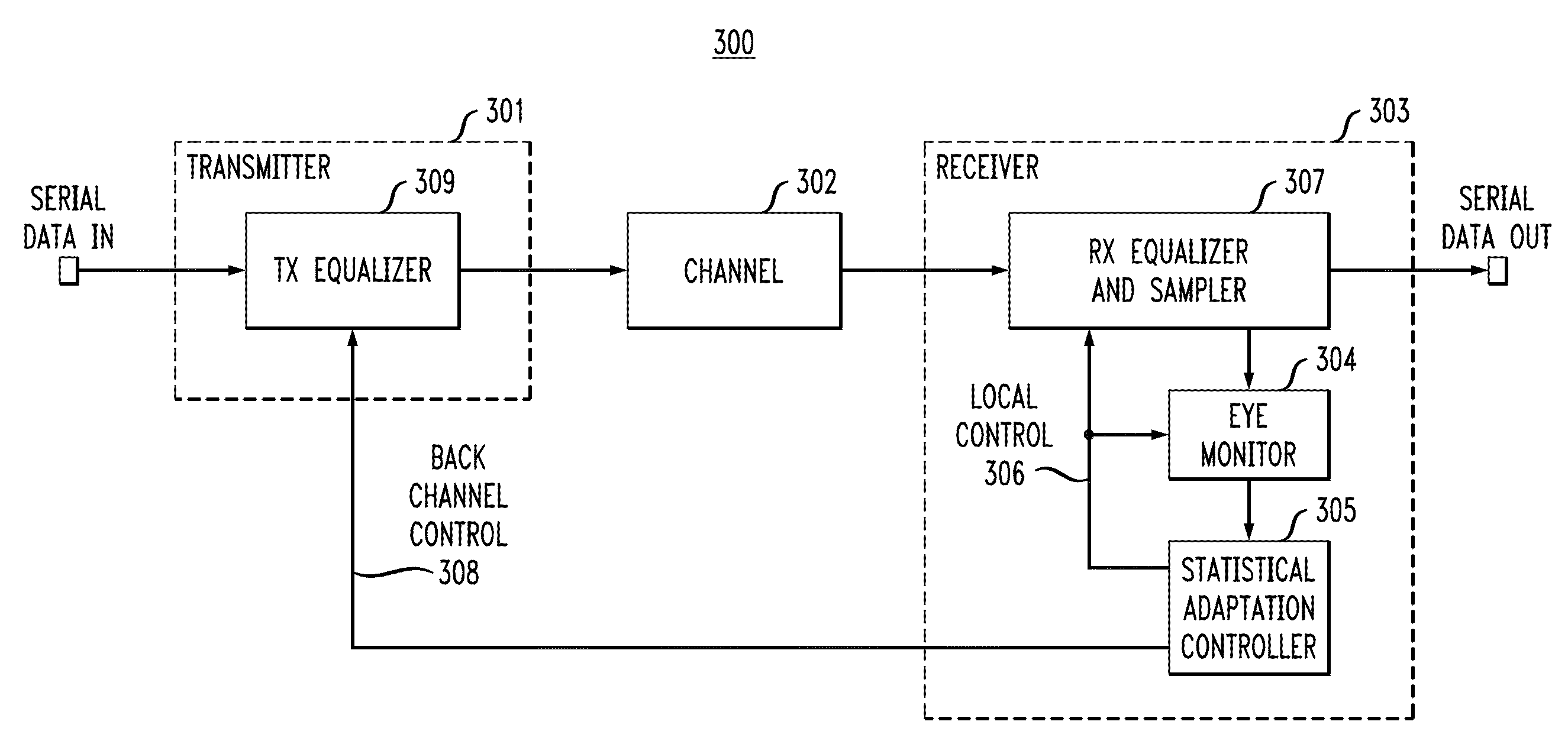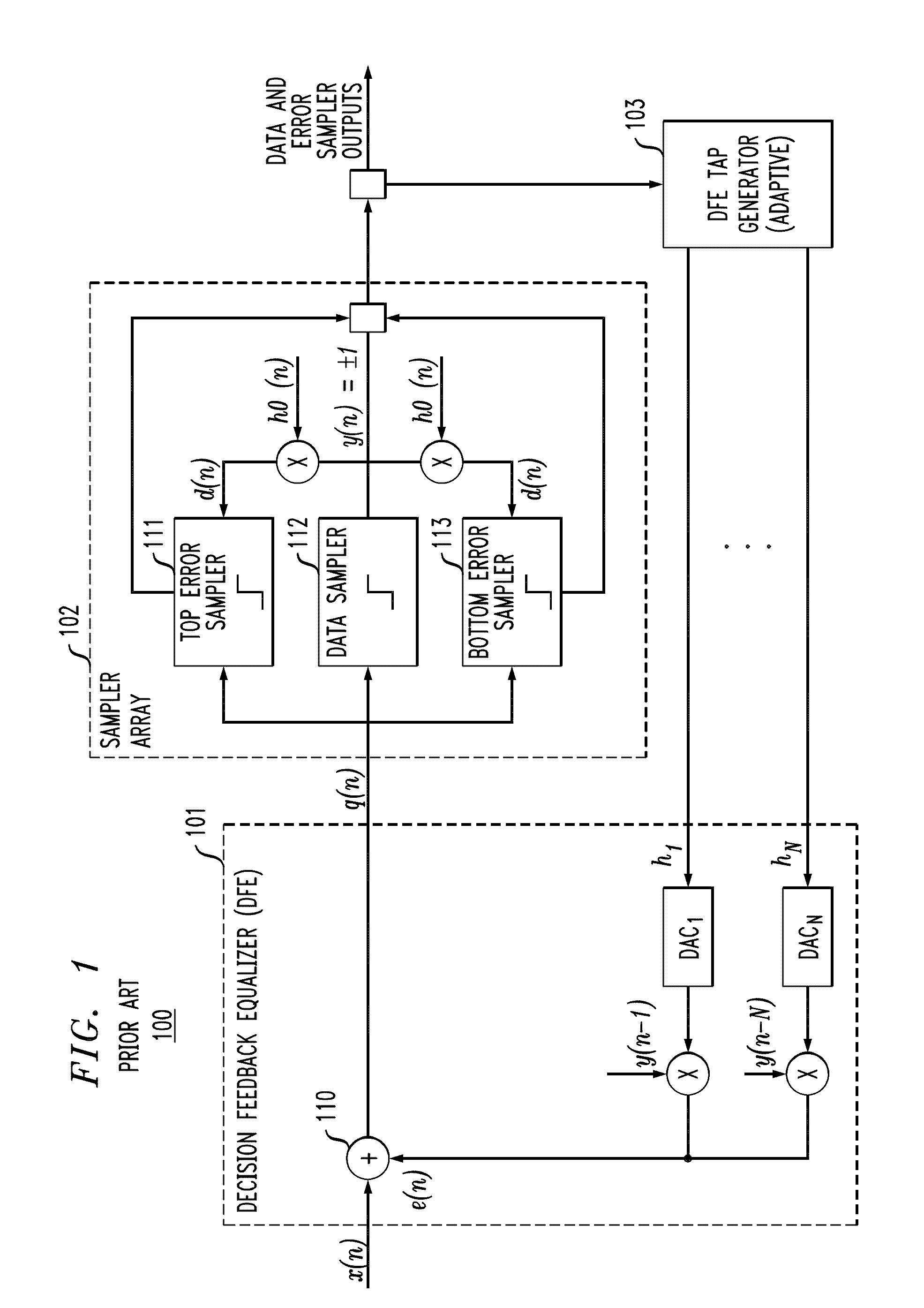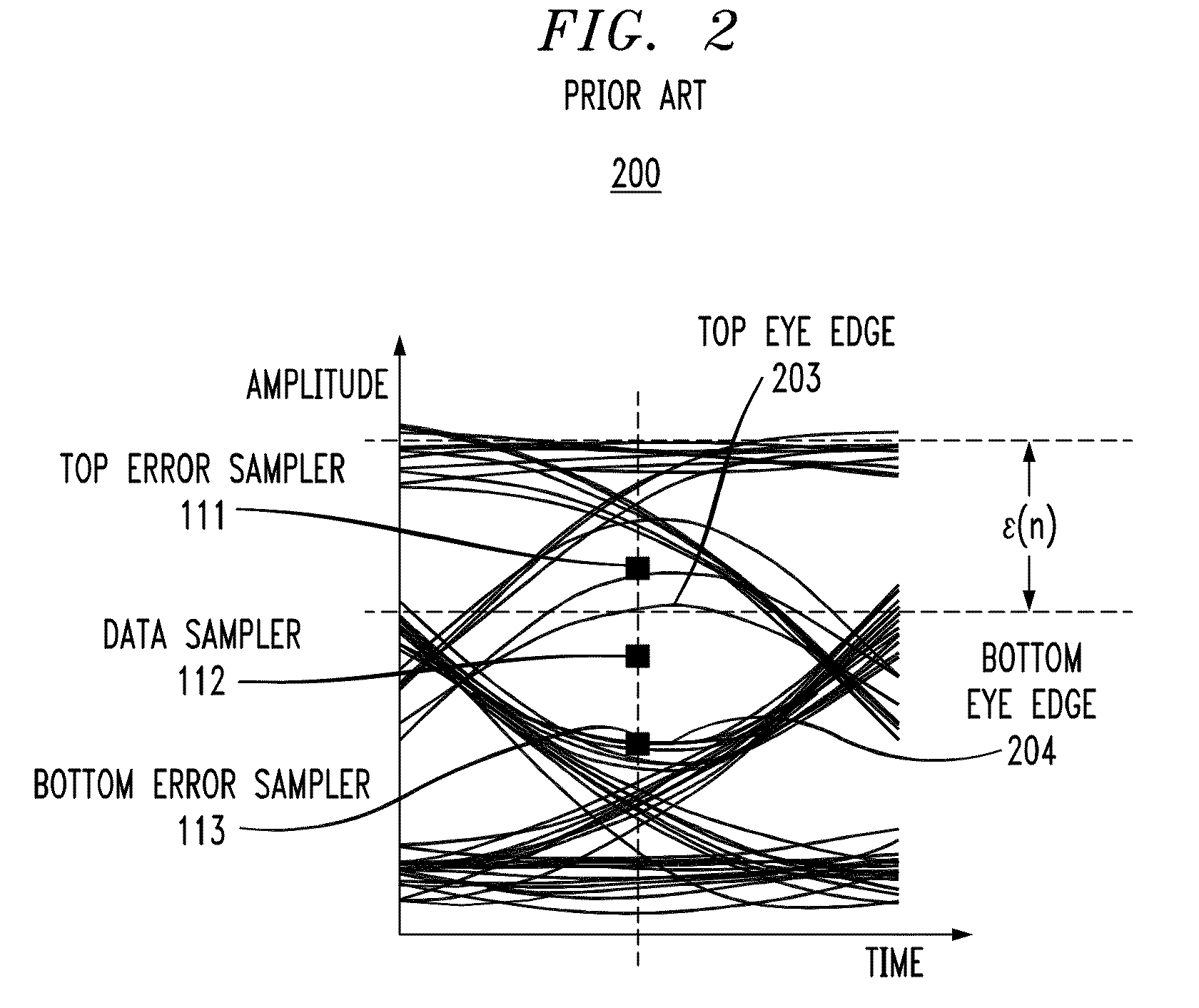Statistically-Adapted Receiver and Transmitter Equalization
a technology of statistically adapted receivers and transmitters, applied in the field of data communication, can solve the problems of frequency-dependent signal loss from the communications channel, signal dispersion and distortion, and the specific frequency-dependent signal degradation characteristics of the communications channel, and achieve the effect of low allowed error rate and high allowed error ra
- Summary
- Abstract
- Description
- Claims
- Application Information
AI Technical Summary
Benefits of technology
Problems solved by technology
Method used
Image
Examples
Embodiment Construction
[0026]In accordance with exemplary embodiments of the present invention, a system employing, for example, a transmitter, a communication channel, and a receiver, detects and applies correction for signal impairments between the input data stream (transmitter side) and the output data stream (receiver side) through adaptive equalization. Adaptive equalization in accordance with exemplary embodiments of the present invention applies statistically adapted equalization during at least two types of intervals: i) intervals with relatively high allowed error rate with known data pattern characteristics during which the data stream might be corrupted during the adaptation process, such as during training intervals at the beginning of data transfer, and ii) intervals with relatively low allowed error rate with random / unknown data pattern characteristics during which the data stream integrity must be maintained, such as normal data transfer intervals. Such statistically based adaptive equaliz...
PUM
 Login to View More
Login to View More Abstract
Description
Claims
Application Information
 Login to View More
Login to View More - R&D
- Intellectual Property
- Life Sciences
- Materials
- Tech Scout
- Unparalleled Data Quality
- Higher Quality Content
- 60% Fewer Hallucinations
Browse by: Latest US Patents, China's latest patents, Technical Efficacy Thesaurus, Application Domain, Technology Topic, Popular Technical Reports.
© 2025 PatSnap. All rights reserved.Legal|Privacy policy|Modern Slavery Act Transparency Statement|Sitemap|About US| Contact US: help@patsnap.com



